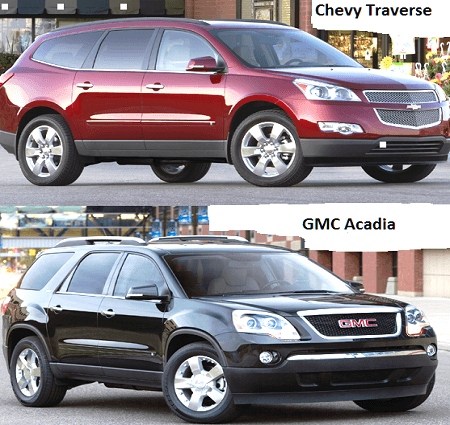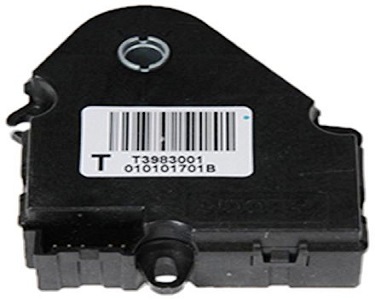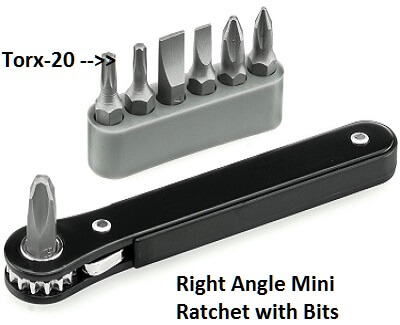GM Temperature Control and Blend Door Problems
Temperature control not working again on your Chevy? This page concentrates on General Motors temperature control and blend door problems on the GMC Acadia and the Chevrolet Traverse.
We'll also cover replacement tips and the important calibration process common across the General Motors line up.
Long story short, there’s something in this article for anybody with this blend door actuator problem. Share this guide with anyone that can't control the temperature in a Chevrolet vehicle.
Quick Links: New GM Temperature Control and Blend Door motor for Chevrolet Trucks Silverado.
It seems that most of the complaints are on split systems where the passenger side doesn't respond to the adjustment. In addition, some owners may complain that the air doesn't come out in the right spot.
As an example, you may select defroster and it takes a long time for the windshield to clear. Often you can hear air escaping behind the dashboard or feel the air exiting the wrong locations.
In addition to these complaints drivers will often hear a grinding or clicking noise in the interior compartment. All of these problems come from devices known as actuator assemblies. There are two of these troublesome beasts located in all General Motors vehicles. People with the upgraded dual zone AC will have three.
 GMC Acadia and Chevrolet Traverse
GMC Acadia and Chevrolet TraverseThe difference in the part numbers and which motor performs which operation becomes important. Here we'll identify the location of the actuator and its function so you're not replacing the wrong one.
In addition, we'll provide some technical tips and tricks for this sometimes difficult operation. The good news is, improved original equipment parts remain available in the $40 price range. With local dealerships charging up to $600 to replace the defective units you have the opportunity to save big bucks with a DIY repair.
Why did General Motors Corp. Use These Defective Actuators
 Air Conditioning Blend Door Actuator Motor
Air Conditioning Blend Door Actuator MotorThe temperature door diverts air over the evaporator for cool air or points the flow over the heater core for warm air.
The blend door diverts the airflow to the defroster vents in the upper dashboard, the floor discharge for heat or the center vents for air conditioning. Carmakers have used this basic design for 100 years. What has changed is the manner in which it's executed.
In the early days we had reliable cables that manually operated the doors putting us in control. Then they changed this to a vacuum system where you pushed a button and the vacuum signal performed the operation for you.
Now we have electronically controlled temperature door actuators and blend door controllers. Electrical signals rotate the motor until the doors pointing in the proper position.
Unfortunately, the early versions of this system weren't all that reliable.
Diagnosing the Air Conditioning Air Flow Actuator
The electronic actuator that controls the direction of airflow is called a blend door actuator. The symptoms associated with this are often complaints that the front windshield is slow to defrost or remains foggy.
The opposite complaint indicating the same problem is when all of the air flows out of the defroster vent despite the position selected on the air conditioning control panel. When this device fails, you might hear a grinding sound that appears to be coming from behind the radio or entertainment system.
This grind or click sound is actually the plastic gears stripping inside. Parts counter people call this the upper actuator. On the GMC Acadia and the Chevrolet Traverse the replacement part number for the blend door actuator is 15-73989.
Finding the Temperature Mode Valve Actuator Assembly
They locate the temperature mode actuator assembly right where you think it should be. It's very close to the air conditioning evaporator core and the heater core assemblies. On the GMC Acadia and Chevrolet Traverse Sport Utility Vehicles this puts it on the passenger side of the automobile.
Mechanics call this the lower actuator, because they mount the blend door motor mentioned above higher up on heater case. When this part fails drivers complain they can’t control the temperature the way they use to. They often describe correct operation as intermittent.
Owners with dual zone systems often say the passenger side doesn't respond or becomes stuck in the cold or hot position. As with the blend door motor you'll hear a click or grinding sound as the gears strip trying to make the adjustments.
There are a couple of things to consider about the temperature control mode actuator when hunting down replacement parts.
If you have the fancy automatic climate system where you set a number on the digital display you get a different temperature actuator than those with a basic system using a slide temperature control.
Tips for Replacing the Automotive HVAC Actuators
 Tight Clearance Mini Ratchet
Tight Clearance Mini RatchetThe factory installs these temperature control actuators in their individual locations before they put the completed dashboard in the car on the assembly line.
Although they give us enough room to back out the retaining bolts, they don't give us enough room to use standard tools on the Traverse and Acadia models.
The factory retains the actuators with just three screws. On the newer models they use a Torx 20 size bit. On the older models you’ll find a 7 mm retaining bolt.
I've seen people use all kinds of crazy setups to get the bolts out. But they do make a right angle mini ratchet for less than $10 that can help speed things up.
I've taken this a step further and reduced the length of the Torx bit before I put it in my mini ratchet. I used my whiz wheel to take off some of the length, making the right angle an even lower profile.
Another thing to mention is that some people recommend taking the actuator assemblies apart and attempt to repair them. I disagree, because they don't last long after the repair, because the nylon gears deteriorate.
Some people might say you're wasting time by replacing the General Motors Corp. HVAC actuator and all you have to do is a calibration. There's no harm in trying this procedure (available below), but I often find the part needs replacing.
If you hear a click or popping noise it needs a new one. No diagnosis required, because the pop or click means a stripped gear.
On some models like the Chevy Suburban and Chevrolet Tahoe the actuators are easier to get at. However, on the GMC Arcadia and the Chevrolet Traverse these can test your patience. You'll find several videos on YouTube proving this operation possible for do-it-yourself driveway mechanics.
Calibrating the New Actuators to Work Properly
If you replace the parts they will work. Unfortunately, they might not move all the way in one direction or the other. This causes less than optimal performance. Drivers often say the air conditioning use to be colder. The dealership has a handheld scan tool that connects to the climate control systems to reset the actuator limits.
After they install a brand new actuator, they hit the calibrate button and the new parts automatically calibrate. This restores precise temperature control.
Having done these repairs several times I became able to perform an actuator calibration without a handheld device. After installing a temperature control or blend door actuator I move the heater AC control panel dial all the way to one direction before I turn on the key for the first time.
When I turn the key on it moves to the end of its travel and turns off. With the key still on I then move the controller in the complete opposite direction.
The motor will run in that direction as far as it will go and turn off. At this point it will have learned the complete range of travel all the way from cold to hot or defroster to the heater vent.
This doesn't work in every situation, but a calibration issue can arise after replacing a General Motors actuator. Before you give up and take it to a dealership, try this re-calibration procedure from Sparky's.
Basically, you're pulling the fuse and turning the key on, then reinstalling the fuse to force the heating and air conditioning system into an automatic calibration routine. However, this only works on certain model years.
Author bio : Mark is a retired ASE certified master technician, Chevrolet Professional Service Council member and the founder of FixMyOldRide.com. Watch the video on the about Mark the mechanic page to see his credentials. Mark hand writes all of the articles on FixMyOldRide.com unless indicated otherwise.